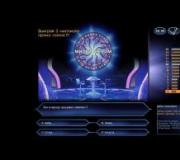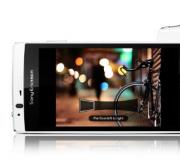How many volts does the USB output of a laptop give out? What is the power of the usb port
After reading many sources, I found the same information everywhere: the USB 2.0 port is capable of delivering no more than 500mA, providing a power of no more than 2.5W. However, there are some things that raise doubts about this.
First of all, about the useful. If you select the "USB Root Hub" properties in the device manager (I don't remember how it is in Russian, look at all the devices), then on the second "Power" tab, information about the connected device will be displayed: how many milliamps are needed for it. The value is taken from the filling of the connected device, this is not the actual current consumption at the moment:
- some flash drives require 500mA (Kingston, Transcend), and some 200mA (Toshiba). Moreover, it has been experimentally proven that a Toshiba flash drive works on any USB 1.8 meter extension cable, even if it is not made according to the standard. It turns out that the less the device consumes, the more chances it has to make money on a USB extension cable or low-quality front connectors of the case;
- and indeed: an optical mouse that consumes 100mA works without any problems on a 3-meter USB extension cable (and all the flash drives are already there "bye-bye");
- USB cable A-B going to the printer was reflected by the recommended value of 98mA;
- USB-HDD "Silicon Power" on 320GB showed 2mA value (connected to one USB port and functioning successfully). The reason was found out: only 1 byte is allocated for the value of milliamperes in the OS, and the maximum value of this counter is 255. Each value of the counter is 2mA. This means that the USB-HDD has gone beyond the possible maximum number, and the counter has zeroed +1 (corresponding to the number 514mA or 1026mA). But this is more than the 500mA declared in the standard!
This was the first doubt about the validity of I max = 500mA for the USB port.
Second: one hub serves several USB ports at once, while it is written that the maximum is 500mA per port. So, in my case, the hub is capable of delivering 2.5A (since it is responsible for 5 ports). If he is able to issue a total of 2.5A - what should prevent him from issuing, for example, 2.5A for one port, and just block 4 others.
Third: the power data of the disassembled USB-HDD is 5V / 0.85A. This is more than 0.5mA. Moreover, it was experimentally found that to start the HDD (reactive load), a much higher current is required than indicated on the HDD.
Fourth: I powered the router via a USB cable, and even then I knew from somewhere about the 1200mA value. Here it is, the struggle of paradigms: I heard there, I saw here, they said there, they wrote here ...
All the prerequisites for the experiment are there to get the real numbers of the current strength of this HDD. Over the course of a month, I will bump into a USB A-miniB cable with a high-precision ammeter for 20,000 rubles - and take readings from it. Eyes or telemetry - how it goes.
(added on 04/07/2015): the experiment with the USB connector was successful, and my guesses were confirmed. The following equipment was used:
- multimeter DT838 (here's a "high-precision" ...);
- active load: external HDD Samsung Momentus ST320LM001, USB coffee warmer Orient W1002B;
- passive load: 4 resistors C5-16V-8W 1Ω ± 1%;
- USB plug;
- EliteGroup G31T-M7 and Gigabyte C51-MCP51 motherboards.
In the process of separate and parallel connection of the active load, it became known:
- the limiting current strength for the HDD (0.85A) is extremely accurate, it was obtained when the disk was spun up and when it was initialized after Windows boot(fractions of a second). Current in idle mode: 0.28-0.35A, in transmission mode at a rate of 28MB / s: 0.56-0.63A;
- the heater consumes constant 0.6A, including during start-up: there is no reactive load. A coffee warmer with a power of only 3W cannot be considered as a serious household item;
- with parallel connection of the load, it was possible to obtain a value of 1.19A. This value exceeds the declared in the USB 2.0 standard by 2.38 times.
Then the question arose: what is the correct limit? An inexperienced technician arranged a short circuit when I entrusted him with the soldering issue, but the equipment did not suffer, and the short circuit was not in vain: the ammeter recorded a constant passage of 3.3A through it, which means that there is a certain ampere limiter in the motherboard (for example, in the controller). Moreover, the limitation worked even when the PC was turned off.
To avoid damage to the active load, it was decided to abandon it in favor of a passive one that transfers all the energy into its own heating: resistors. Oddly enough, resistors of high power and low resistance were in short supply, and only 4 were found. Moreover, they are 25-30 years old, and the shelf life of this type is 15 years old. What a surprise it was when, after the end of the experiments, it turned out that the resistance of one of them increased by + 50%, to 1.5 Ohm. Then all the "errors" in the experiment became clear.
First, 1.45A was obtained, which successfully heated the resistors for several minutes. Further, lowering the resistance, the current value of 3.05A was reached. And it is with this value that the automatics ( motherboard or Windows?) disconnected the USB connector, but in some unusual way: by reducing the current value not to 0, but to 0.4A.
So, the current limit for the USB connector hangs in the range)



